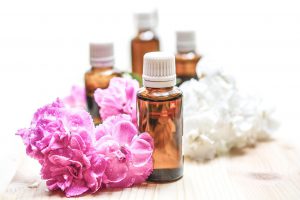
This week, I am keeping with the theme of “staying green for the summer” and building a better world for future generations. I just released my post on how a “tiny” swap for a baby care product can be the first step in creating the momentum for purchasing other safer, kid-friendly goods.
We are at a critical time in our world, when we need to make big decisions on the legacy we leave behind. Being role models to children that demonstrates that we care enough to take care of ourselves, them, and the planet is important. Through witnessing that our choices have consequences, even in what appears like a minor daily decision on which personal care products we use, will begin to shape their future decisions.
This “small” decision actually has a very large impact. Toxins not only effect critical periods of physical development, but also influence mental health. In fact, several substances have been linked to common symptoms of children’s mental health issues, including ADHD and anxiety disorders. You can read more about this in a summary on these associations here.
One abstract from a 2008 article in Neurotoxicology summarizes these connections and states:
While proper brain function requires the complex interaction of chemicals perpetually occupied in purposeful biochemistry, it is well established that certain toxic substances have the potential to disrupt normal brain physiology and to impair neurological homeostasis. As well as headache, cognitive dysfunction, memory disturbance, and other neurological signs and symptoms, disruption of brain function may also manifest as subtle or overt alteration in thoughts, moods, or behaviors. Over the last four decades, there has been the unprecedented development and release of a swelling repertoire of potentially toxic chemicals which have the capability to inflict brain compromise. Although the ability of xenobiotics to induce clinical illness is well established, the expanding public health problem of widespread toxicant exposure in the general population is a relatively new phenomenon that has spawned escalating concern. The emerging area of clinical care involving the assessment and management of accrued toxic substances such as heavy metals, pesticides, plasticizers and other endocrine disrupting or neurotoxic compounds has not been fully appreciated by the medical community and has yet to be incorporated into the clinical practice of many consultants or primary care practitioners. (source)
Now, you can take action to support our brains and bodies with less harmful chemical exposures and more essential oils inhalation.
Honoring our children and paying attention to their physical health, as well as providing the soothing benefit of calming essential oils, can “pay off” in many ways.
Click here to access the article and use the code sent in my E-blast to my subscribers to access it.
Want to Learn More About Essential Oils and Get the Latest Research?

Visit my website to get resources to get you started with using essential oils, along with access to exclusive content, delivered right to your inbox!
This material is for information purposes only and is not intended to diagnose, treat, or prescribe for any illness. You should check with your doctor regarding implementing any new strategies into your wellness regime. These statements have not been evaluated by the FDA. (Affiliation link.)
Disclaimer: This information is applicable ONLY for therapeutic quality essential oils. This information DOES NOT apply to essential oils that have not been tested for purity and standardized constituents. There is no quality control in the United States, and oils labeled as “100% pure” need only to contain 5% of the actual oil. The rest of the bottle can be filled with fillers and sometimes toxic ingredients that can irritate the skin. The studies are not based solely on a specific brand of an essential oil, unless stated. Please read the full study for more information.



